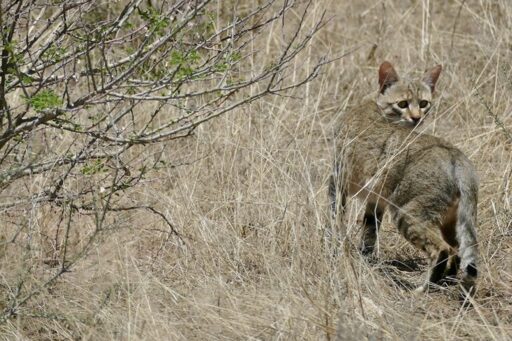- cross-posted to:
- biodiversity
- cross-posted to:
- biodiversity
- The WAP Complex of protected areas that straddles the border region of Benin, Burkina Faso and Niger is one of West Africa’s most important protected areas and a haven for many iconic endangered species.
- Servals, caracals and African wildcats are also found in the WAP Complex, but almost nothing is known about their status, distribution, ecology or threats.
- Covert surveys of medicine markets in the region have found serval and caracal skins, though it’s not known if the skins originated within the WAP Complex.
- The presence of jihadist militants in the region severely impacts conservation and research, particularly in the Niger and Burkina Faso portions of the complex.
In the border region between Benin, Niger and Burkina Faso lies a network of protected areas that form one of the largest intact wildernesses in West Africa. The W-Arly-Pendjari (WAP) Complex is a mosaic of gallery forests, savannas and riparian habitats, and the last refuge for many of the region’s most iconic species, including West African lions (Panthera leo leo), savanna elephants (Loxodonta africana) and cheetahs (Acinonyx jubatus).
With conservation focused on these threatened and beloved species, it’s easy for the small cats to get lost. There are three species of small cats — servals (Leptailurus serval), caracals (Caracal caracal) and African wildcats (Felis lybica) — in the WAP complex. Though all three have a conservation status of least concern on the IUCN Red List, there are few hard facts about their numbers in the WAP Complex or West Africa. With continuing insecurity plaguing the region, and little money for small cat research, these species risk falling even further into obscurity.
At the heart of the WAP Complex lie three strictly protected areas: Pendjari National Park in Benin, Arly National Park in Burkina Faso, and W Regional Park, which straddles the Benin, Burkina Faso and Niger border region. Together, these parks, along with adjoining hunting zones, wildlife reserves and areas under other forms of protection, cover 34,000 square kilometers (13,100 square miles). The core area, about half of it, is a UNESCO World Heritage Site.
Over the past few years, the region has been plagued by insecurity. Jihadist militants are entrenched in the Burkina Faso and Niger portions of the complex, with violence increasingly spilling over into Benin. Conservation work has become difficult and dangerous, though South Africa-based organization African Parks, which manages Pendjari National Park and the Benin portion of W, still carries out some biomonitoring activities, says Jacques Kougbadi, marketing and communications coordinator for African Parks.


